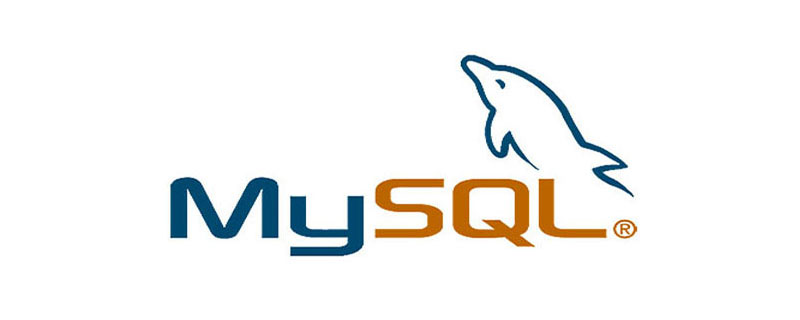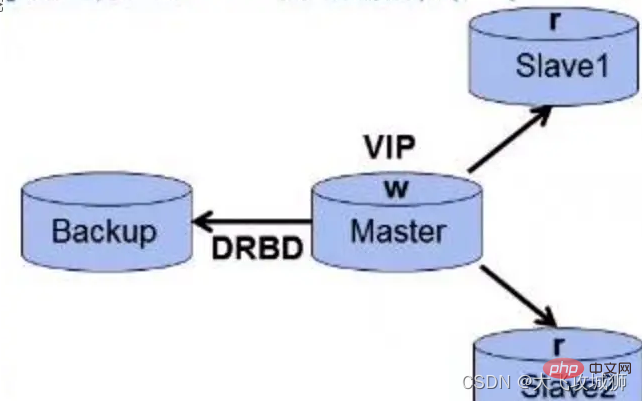This article brings you relevant knowledge about the technical analysis of mysql medium and high availability architecture. It mainly introduces the technical analysis of MMM, MySQL master-slave architecture and Cluster-related issues. I hope it will be helpful to you. Everyone is helpful.

With the development of information technology, enterprises increasingly rely on information management. The data information of each business application is mainly stored in In databases, enterprises have increasingly higher requirements for the continuity of access to these data. In order to avoid various losses caused by data interruption, the high availability of databases has become a top priority in enterprise information construction. At the same time, key businesses in industries or fields related to the national economy and people's livelihood, such as telecommunications, finance, energy, and military industry, require high availability for key data storage. The data system must be guaranteed to run 24/7 to prevent data loss and damage. Click to get programming learning materials
High-availability architectureIt is basically standard for Internet services. Both application services and database services need to be high-availability. Available. For a system, may contain many modules, such as front-end applications, caches, databases, searches, message queues, etc. Each module needs to be highly available to ensure the high availability of the entire system . For database services, high availability may be more complex. The availability of services to users requires not only access, but also correctness guarantees. Therefore, high availability of databases requires more authentication.
MySQL High Availability Architecture Classification
MMM (Master-Master replication manager for MySQL) is a set of A script program that supports dual-master failover and daily management of dual-master.
MMM is developed using the Perl language. It is mainly used to monitor and manage MySQL Master-Master (dual-master) replication. Although it is called dual-master replication, it is only allowed at the same time in business. Write to one master, and provide partial read services on the other alternate master to speed up the warm-up of the alternate master at the time of master-to-master switching.
The monitoring end of MMM will Provide multiple virtual IPs (VIPs), including a writable VIP and multiple readable VIPs. Through supervisory management, these IPs will be bound to the available mysql. When a certain mysql goes down, it will be vip migrated to other mysql.
#On the one hand, the MMM script program implements the failover function. On the other hand, its additional internal tool scripts can also achieve read load balancing of multiple slaves.
This package can also read load balance across any number of slave servers based on a standard master-slave configuration, so you can use it to start up on a group of replicated servers. Virtual IP, in addition, it also has scripts to implement data backup and resynchronization functions between nodes.
MMM basic component analysis
Basic implementation principle of MMM implementation
MMM provides automatic and manual methods to remove the virtual IP of a server with high replication delay in a group of servers. , and it can also back up data and achieve data synchronization between two nodes.
MySQL itself does not provide a replication failover solution. Server failover can be achieved through the MMM solution, thereby achieving high availability of mysql.
Usage scenarios of MMM
Since MMM cannot completely guarantee data consistency, MMM is suitable for applications where data consistency requirements are not very high, but Scenarios where you want to ensure business availability to the greatest extent.
For those businesses that have high requirements for data consistency, it is highly not recommended to use a high-availability architecture like MMM.
MHA (Master High Availability) is currently a relatively mature solution for MySQL high availability. It was developed by Youshimaton of Japan's DeNA Company (now working at Facebook) and is an excellent set of solutions. High-availability software for failover and master-slave promotion in MySQL high-availability environment. During the MySQL failover process, MHA can automatically complete the database failover operation within 0 to 30 seconds, and during the failover process, MHA can ensure data consistency to the greatest extent to achieve true High availability in the sense.
MHA is an open source MySQL high-availability program. When MHA monitors a master node failure, it will automatically promote the slave node with the latest data to become the new master node.
MHA will obtain additional information from other nodes to avoid consistency problems, that is, MHA will obtain data information from other slave nodes and send the information to the closest master node A slave node, so that when the master node fails, this slave node will be promoted to the master node, and this slave node has all the data information of other slave nodes.
MHA also provides the online switching function of the master node, that is, switching the master/slave node on demand.
Basic components of MHA
MHA consists of two parts: MHA Manager (management node) and MHA Node (data node).
MHA Manager can be deployed separately on an independent machine to manage multiple master-slave clusters, or it can be deployed on a slave node.
MHA implementation principle
Usage scenarios of MHA
Currently, MHA mainly supports a one-master, multiple-slave architecture.
To build MHA, a replication cluster must have at least three database servers, one master and two slaves, that is, one acts as the master, one acts as the backup master, and the other acts as the slave. Library.
Because at least three servers are required, Taobao has also made modifications on this basis due to machine cost considerations. Currently, Taobao TMHA supports one master and one slave.
From a code perspective, MHA is just a set of Perl scripts. So I believe that with Alibaba’s technical strength, it is not difficult to change MHA to support one master and one slave.
This kind of architecture is commonly used by start-ups, and it also facilitates subsequent expansion step by step
Features of this architecture


The access process of MySQL Cluster is roughly like this. Applications usually use a certain load balancing algorithm to distribute data access to different SQL nodes. The SQL nodes perform data access to the data nodes and return data results from the data nodes. The management nodes It only configures and manages SQL nodes and data nodes;
Understanding MySQL Cluster nodes
MySQL Cluster can be divided into three types of nodes according to node types, namely management nodes, SQL nodes, Data nodes, all these nodes constitute a complete MySQL cluster system. In fact, the data is stored in the storage engine of the NDB storage server, and the table structure is stored in the MySQL server. The application accesses the data through the MySQL server, and the cluster management The server manages the NDB storage server through the management tool ndb_mgmd;
[1. Management node]
The management node is mainly used to manage other nodes. The config.ini file is usually configured to configure how many copies need to be maintained in the cluster, how much memory to allocate for data and indexes on each data node, IP address, and the disk path to save data on each data node;
Management nodes usually manage Cluster configuration files and Cluster logs. Each node in the cluster retrieves configuration information from the management server and requests a way to determine where the management server is located. If a new event occurs in the node, the node transmits the information of this type of event to the management server and writes this information to the Cluster log;
Generally, at least one management node is required in the MySQL Cluster system. , It is also worth noting that because the data node and SQL node need to read the Cluster configuration information before starting, the management node is usually the first to start;
[2.SQL node]
The SQL node is simply the mysqld server. The application cannot directly access the data node and can only access the data node through the SQL node to return data. Any SQL node is connected to all storage nodes, so when any storage node fails, the SQL node can transfer the request to another storage node for execution. Generally speaking, the more SQL nodes, the better. The more SQL nodes, the smaller the load assigned to each SQL node, and the better the overall performance of the system;
[3. Data nodes]
Data nodes are used to store data in the Cluster. MySQL Cluster replicates data between data nodes. If any node fails, there will always be another data node to store the data;
Usually this Three different logical nodes can be distributed on different computers. The cluster has at least three computers. In order to ensure the normal maintenance of the cluster service, the management node is usually placed on a separate host;
Recommended learning: mysql video tutorial
The above is the detailed content of Let’s analyze MySQL’s high-availability architecture technology together. For more information, please follow other related articles on the PHP Chinese website!